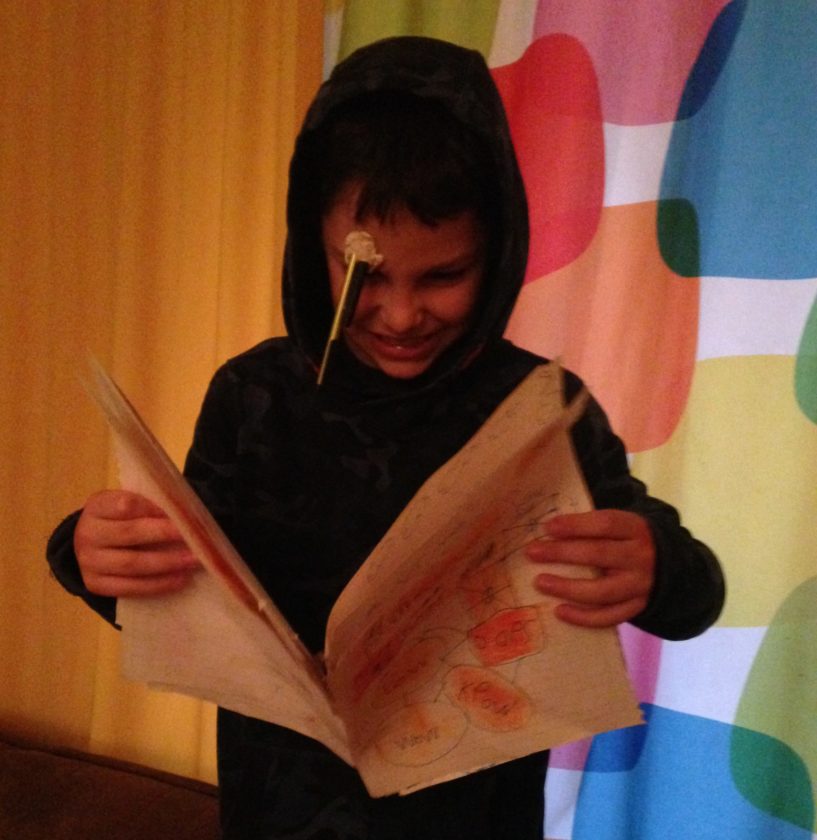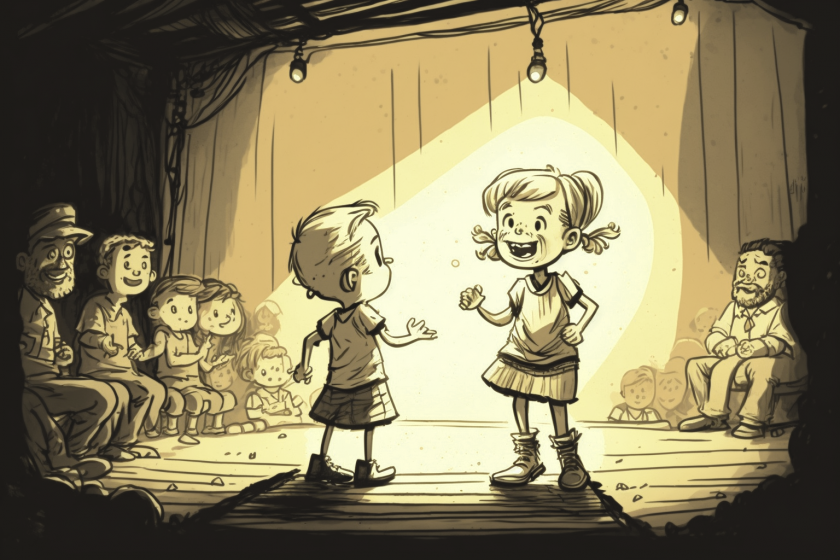Drama is a fun element to add to a homeschool curriculum and also a fantastic way to encourage homeschoolers to develop confidence in narration and presentation, skills that are useful outside of the classroom.
Watch performances – online and in person – and act out plays at home. Make ‘Script Writing’ the focus of an English lesson and act out the resulting play. Exploring facial expressions and body language, tone of voice and gestures are fantastic soft-social skills to learn and memorising the lines of a character is brilliant for memory recall…There are numerous benefits to including drama and theatre studies in a home-ed curriculum!
Theatre is a great way to teach comparative writing
- compare and contrast different productions of the same play
- watch the show and the movie and compare the two
Read the script…
Use the script as a read-aloud activity. Assign a character to each homeschooler and talk about the difference between reading as a character and reading as a narrator.
.. explore how the theatre team brought the script to life through the use of lighting and set design
- Examine the power of music to set a scene or change the tone
- Design a set complete with a lighting plan and bring science & tech into drama lessons (a blanket, torch and props are all you need to get started).
- Explore costumes – design your own! (facepaints, old clothes, reimagined costumes..put the dressing up box to use)
Playscripts.com is a great resource to find specific playscripts to use as part of a home-ed lesson.
- You don’t need scripts to include drama in home-ed lessons – use a (dialogue-heavy) section of a book they enjoy and improvise or encourage them to write their own plays and experiment with costumes

- Re-use the script to make an English or History lesson: Talk about taking plays out of context and setting them in a different time period – can you rewrite this play for the robot age/ rewrite it to match a historical era of study? How is grammar different in playscripts?
Making lessons fun is the key to good drama lessons. If your homeschoolers are musical, add instruments and songs into improvisation lessons, study a musical or ask them to take the lyrics from a favourite song and turn it into a skit.
Drama Notebook
Drama Notebook is a great place to start collecting ideas to bring drama into a homeschool.

- Read the guide on How to Teach your First Drama Class! It’s full of great tips.
- Use the drama games ideas to get homeschoolers warmed up and enthusiastic
- Ask homeschoolers to choose a monologue (kids / teens great lists) and perform for the ‘class’
If drama is going to be a constant lesson in your homeschool, a subscription to Drama Notebook would be a fantastic investment as a teaching resource tool. A subscription gives you access to teacher tips, detailed, simple to follow, exciting lesson plans and access to a script library.
Drama Notebooks lessons are incredibly flexible..

which is great for home educators.
If drama in a homeschool curriculum inspires your homeschooler to get involved in theatre, local amateur dramatics societies are an excellent way for homeschoolers to socialise, ‘study’ in a group and as a ‘real life’ application of home-ed lessons – I can use this lesson knowledge/skill outside of the classroom.
A drama home education curriculum can include courses to boost their pre-18 CVs, with qualifications like these Digital Drama Grades via Trinity College which are eligible as UCAS (Universities and Colleges Admissions Service) points.
The National Theatre has some useful teaching resources that can help home educators learning to teach drama as a home-ed subject.
A school trip to the theatre is the highlight of any school-based drama class..make it the same in home-ed!
One of the bonuses of home-ed is being able to set your own school timetable: Matinee performances are a fun way to add a different dimension of learning into a home-ed week and the performances are often quieter which reduces distractions and can help younger children concentrate more intensely on the performance.

If you’re not able to include actual theatre trips in your homeschool, streaming theatre shows online is the next best thing.
Many theatres (especially post-Covid) stream performances online – including the National Theatre which as well as streaming fantastic theatre productions also offers behind the scene insights into the workings of the theatre, acting methodology, set and lighting design and explanations of the plots of plays. It’s a great resource for homeschoolers who want to bring the theatre home.
Digital Theatre is another great website that brings theatre from stages all over the world together in one place and as with National Theatre, you can rent a specific show or sign up for membership to access them all.
Online theatre allows you to bring the best theatre companies and performances, traditional plays and modern theatre straight into a home-ed classroom.
Learning to project their voices, speak confidently in front of an audience and appreciate the culture of theatre equips children with so many skills they can benefit from whatever they go on to do with their lives.
A drama or theatre studies programme additionally reminds children that the world of employment is vast and varied – try listing all the job roles needed to put on a play! What exactly is a lightening engineer or a set designer?
Home education is ultimately a means to an end – to educate the child to a level that sets them up for living independently, with the skills (and knowledge) to earn an income. When you show them that ’employment’ doesn’t have to fit inside any box – academic or otherwise- their worldview and dreams expand. Theatre is a great way to expand the classroom and their minds.
Example Home-Ed Drama Lesson:
Drama lessons and English language lessons complement each other perfectly and in home-ed it’s easy to combine the two subjects into one ‘lesson’.
The Wind in the Willows is a brilliant book to include as a read-aloud book in homeschool; it’s also a great book to start introducing drama and theatre into a home-ed classroom.
- Ask homeschoolers to choose a monologue from the book and perform it (Badger and Mr Toad are great characters for this exercise)
- Use a description in the book as stage directions and act it out

- Design a poster for a Wind in the Willows theatre show.
Art practice is an easy skill lesson to include as a bonus lesson within other subject ‘lessons.’ Adding art to maths lessons, illustrations to poetry or drawing to copywork can make lessons more appealing to visual learners. Additionally, in lessons where the objective is to focus on a tricky skill (handwriting) or memorise facts/formulas (times tables etc), an artistic dimension to the lesson takes some of the focus off the main skill set and learners relax: Happy students learn more.
- Use the playscript to perform a section of the ‘book’ at home, making costumes, fashioning together a set (from bed sheets/ furniture/props from around the house) and playing with the lighting.
A drama curriculum wouldn’t be complete without Shakespeare. Read how to include Shakespeare in a home-ed curriculum here.

